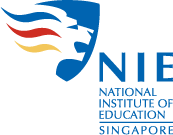By Mr Edmen Leong, Director Specialised Education Services, Dyslexia Association of Singapore (DAS)
Can struggling readers or learners with dyslexia be encouraged to read? How can we use technology in the classroom to help readers discover the worlds hidden in books? How shall we teach struggling learners?
Dyslexia is a learning disorder that affects a person’s ability to read, spell, comprehend text, and write. DAS has developed programmes to address the challenges faced by learners with dyslexia using an adapted version of the Orton-Gillingham (OG) Approach. This is a direct, explicit, multisensory, structured, sequential, diagnostic and prescriptive way to teach literacy when reading, writing and spelling do not come easily to individuals. | Read More |
The use of technology can be seen in the DAS classroom. Some examples include the administration of tests and assessments to track the progress of learners, and the use of interactive e-books to encourage reading.
I shall elaborate on the use of interactive e-books for learners with dyslexia. One of the biggest challenges for dyslexic readers is the inaccessibility of printed words in books. The development of interactive e-books overcomes this difficulty by having the literature read aloud to the dyslexic learners, and in the process, vouchsafe them opportunities to expand their vocabulary, linguistic finesse, and general knowledge through the literature.
An ongoing research project conducted by my colleague on the use of e-books for such learning objectives suggested that younger readers who used to struggle with reading became a lot more motivated to read after being introduced to e-books. This study is expected to be published in end-2020.
While the e-book application can open doors to new knowledge and literature for struggling and dyslexic readers, it is important to understand the reasons behind reading motivation for struggling readers or learners with dyslexia, and explore the possibility of these readers being able to eventually read independently.
On top of the studies on technology, we are particularly interested in investigating the possibility of supporting struggling learners who are not dyslexic. While there is a lot more to explore in this area in terms of research, we have conducted a small study aimed at understanding this possibility in one of our programmes. Results from that study indicated significant effects of interventions on struggling learners who do not have dyslexia (Abdul Razak et al., 2018).
The programmes at DAS are based on established teaching practices and further evaluated by our researchers to ensure relevance in the local context. For instance, the effectiveness of the OG Approach adopted by DAS was validated through an in-depth study conducted in 2015 (Lim and Oei, 2015). The evaluations and recommendations for improvement of the programmes run by DAS are published in various research papers, which can be accessed at https://das.org.sg/publications/49-research-journal.html.







